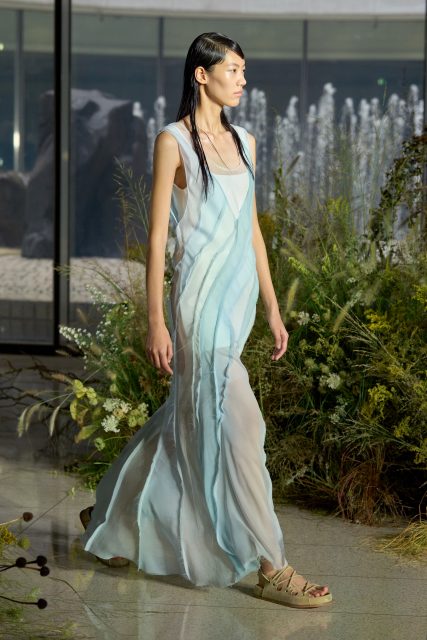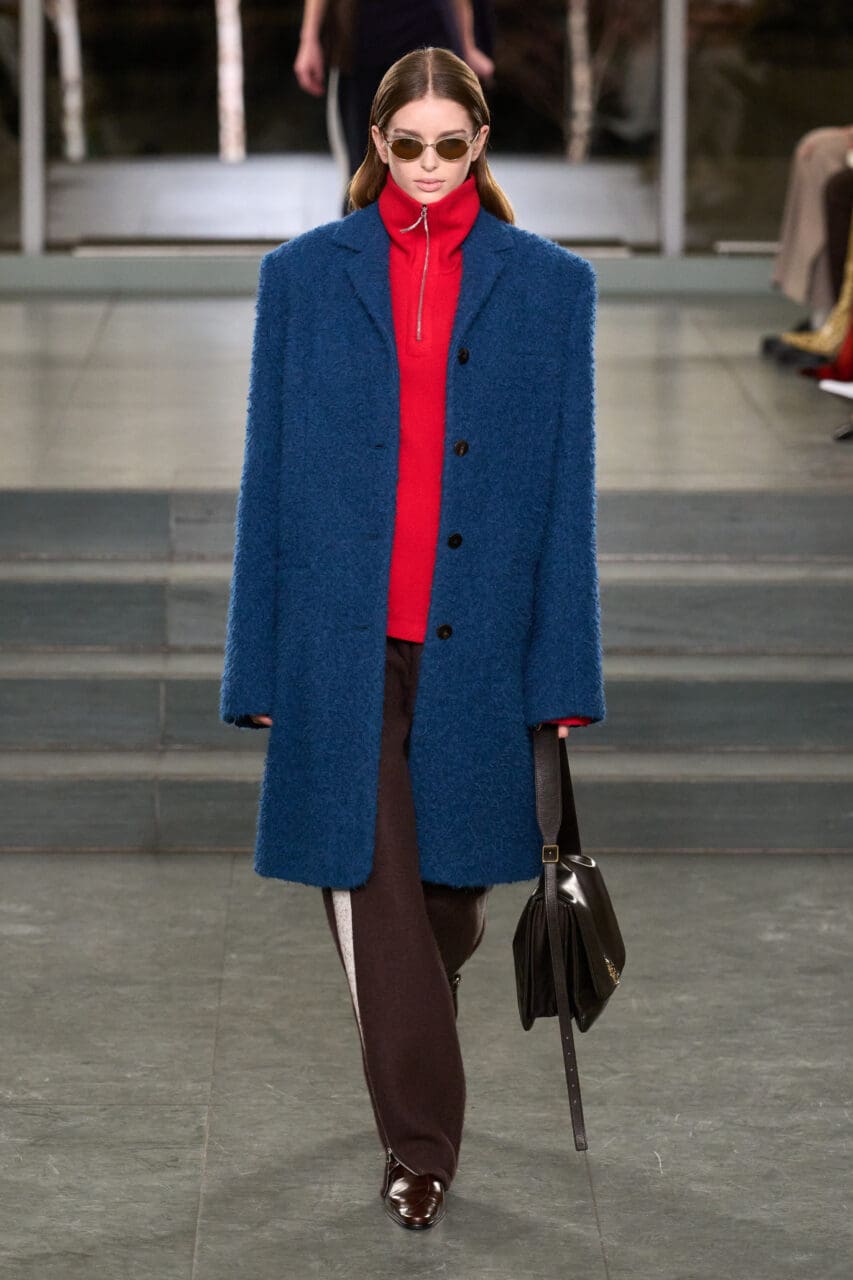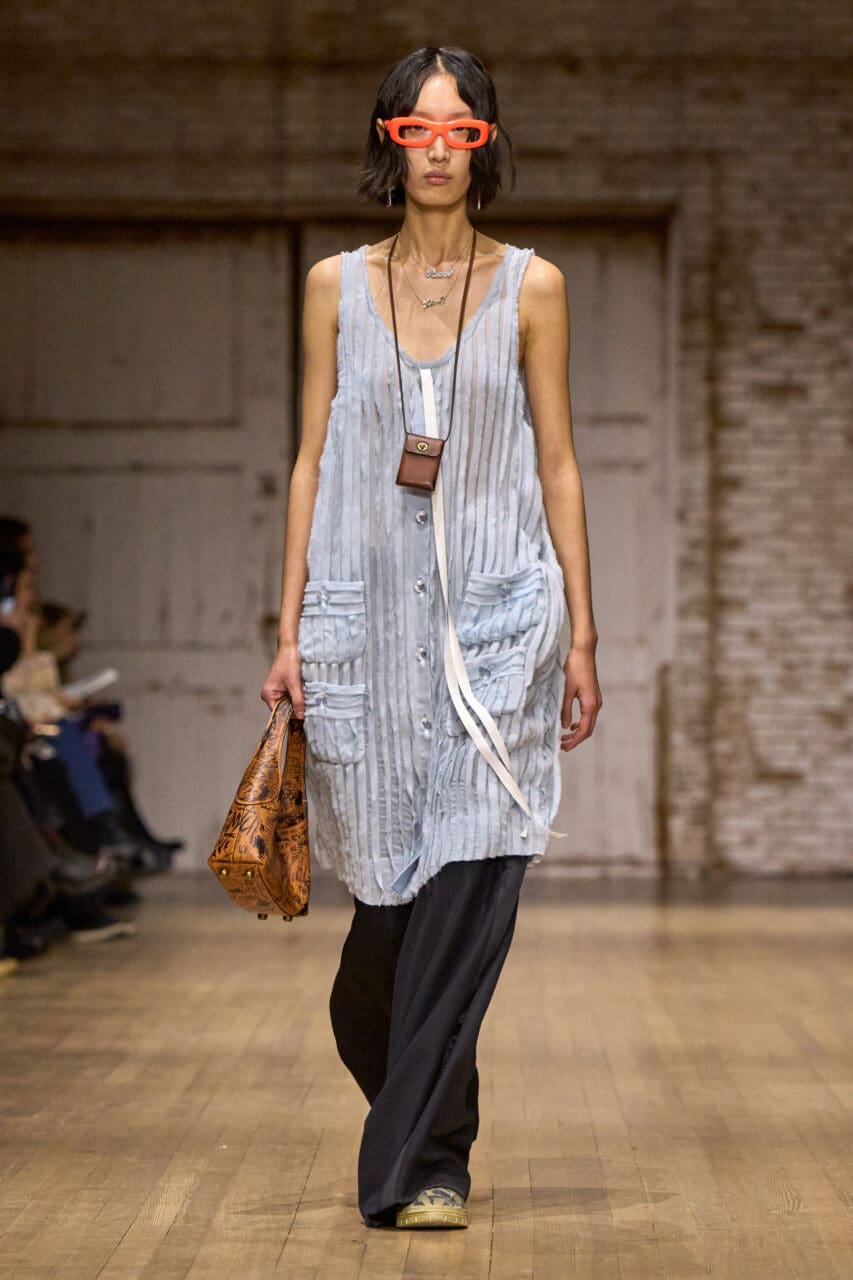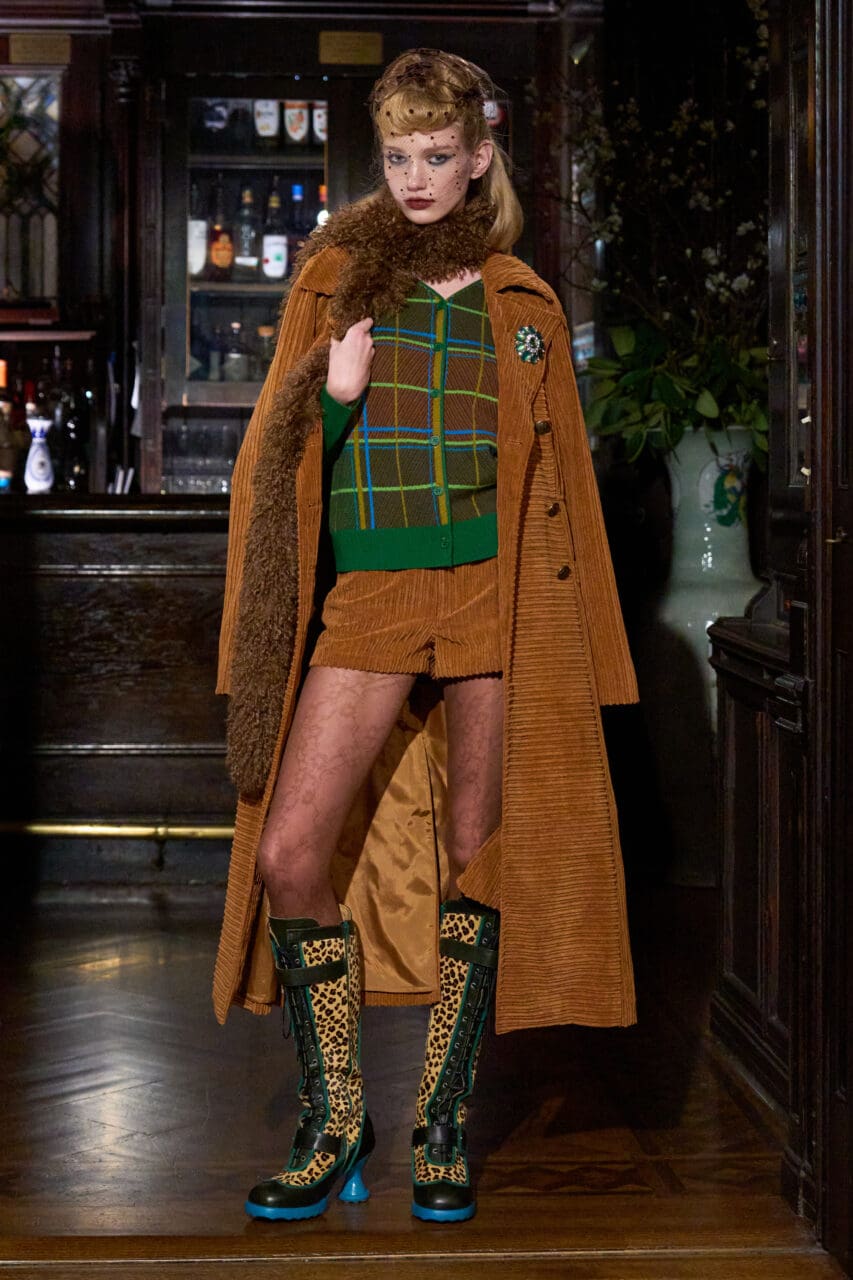In recent years, Prabal Gurung, one of New York’s most socially conscious designers, has taken to using his shows as platforms for politics and advocacy. Between these activities and his taste for glitz and glamour, it sometimes felt as if the designer person—versus the designer persona—got lost. That dynamic was reversed this season when Gurung presented a kind of homecoming collection outside in the Franklin D. Roosevelt Four Freedoms State Park on Roosevelt Island.
The location had personal significance for Gurung, who in 2018 participated in a “Freedom From Fear” light installation in support of gun control. He is also moved by President Roosevelt’s list of fundamental human rights: Freedom of speech. Freedom of worship. Freedom from want. Freedom from fear. It’s these things that have made America a mecca for people from all over the world, and turned the island of Manhattan, together with all the boroughs, into a melting pot. Born in Singapore, and raised in Kathmandu, Gurung worked in New Delhi prior to immigrating to New York. Part of his baggage was a sense of “rootlessness” and “unbelonging,” he noted in a pre-show interview. On a recent visit with relatives in India, Gurung experienced the pleasures of home on many levels. Not only did he unearth some deeply rooted personal memories (happy ones), but some of the patterns in the collection were inspired by his grandmother’s wallpaper, and, overall, the clothes were based on traditional Nepali and Indian garments. “It’s about time the West meets the East,” rather than vice versa, he said, noting that he’s observed a shift in “international power dynamics.”
Fashion lovers are more likely to fixate on his power shoulders (not to mention gathered waists and tapered silhouettes). “It’s ’80s Escada and ’80s Bollywood—and also Bill Blass,” he said. “My time there and all those archival jackets are still a big part of my memory.” Ditto the jewelry “my aunts wore with their saris when they came to America with their broad shouldered jackets,” he said. This personal memory was translated into amber drops that dripped from an airy sheer tank, and also the oversized earrings made for the show. Fashion family memories came alive in the casting: Anne Vyalitsyna opened in a warrior woman white look to the strains of Björk’s “Hunter,” and Tasha Tilberg wore the penultimate ensemble; a sort of tank with a peplum borrowed, Gurung explained, “from the angrakha blouse that at lot of Rajasthani male dancers wear.” Feathers that bopped on a knit number got close to Bottega Veneta territory, but in almost every other way, this line-up showed a side of Gurung not often seen. Indeed, the contrast between past seasons’ collections and this one was striking. There was a lot more ease here, more separates (see look six with the gorgeous draped pants and a corset layered over an apron-like chiffon panel that trained out in back). There were a number of beautifully pleated pieces, including a metallic blue one-shoulder dress and a longer yellow number constructed of rectangles of starched linen, which probably one-ups Mary McFadden’s synthetics in the sustainability stakes. In any case, working with “humble” fabrics like denim and linen allowed for new shapes and textures and brought things a bit down to earth, if not back to basics; Gurung makes dress-up clothes and these fit the bill, but in a way that felt modern.
It might have rained on Gurung’s parade, but maybe that was also a sign of good luck, like they say at outdoor weddings when the weather doesn’t cooperate. In the end, the designer seemed to have somehow watered his soul. “I was so stressed, but it all worked out in the end,” Gurung said. “It was the models who told me, ‘Your job is to make clothes and ours is to show them, so don’t worry, we got this.’” No man, it seems, is an island, after all.
Editor
Laird Borrelli-PerssonCredit
Lead Image: Daniele Oberrauch / Gorunway.com





